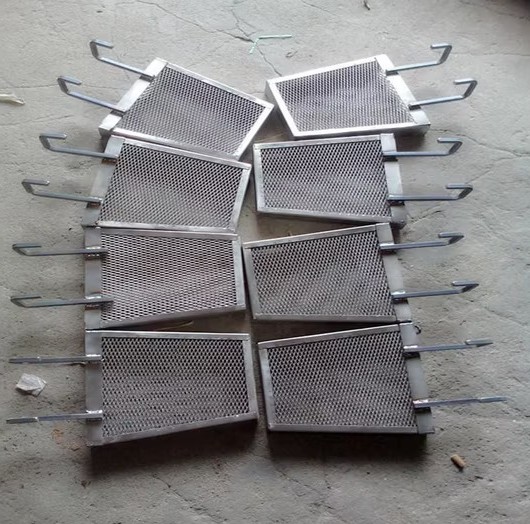Introduction
Electroplating heat exchangers is a vital component used in electroplating systems to regulate the temperature of the chemical bath. In electroplating, maintaining a specific temperature range is critical for achieving consistent deposition of metal on the substrate. A heat exchanger helps either heat or cool the electroplating solution depending on process requirements. Without proper thermal regulation, the plating quality can degrade, chemical reactions can become unstable, and operating costs can increase due to chemical waste and rework.
Purpose of Using Heat Exchangers in Electroplating
- Maintaining Optimal Bath Temperature:
- Electroplating reactions are temperature-dependent.
- Each plating solution (e.g., for nickel, chrome, zinc) has a defined working temperature range (usually between 40°C to 70°C).
- A controlled temperature ensures consistent metal ion transfer and layer buildup.
- Enhancing Efficiency and Surface Quality:
- Uniform temperature across the bath ensures equal metal distribution on parts.
- This results in smooth, glossy, corrosion-resistant coatings without pits or uneven thickness.
- Preventing Overheating and Cooling Issues:
- Overheating can decompose chemicals, release harmful gases, or cause rapid evaporation.
- Too cold temperatures can slow plating, cause poor adhesion, and lead to rough surfaces.
- Heat exchangers actively prevent these issues by quickly correcting temperature deviations.
- Ensuring Process Repeatability:
- Industrial electroplating requires batch consistency.
- Thermal stability ensures that every batch has the same conditions, leading to predictable results and lower rejection rates.
Types of Heat Exchangers Used in Electroplating
- Immersion Coil Heat Exchangers:
- Design: Simple coils submerged inside the electroplating tank.
- Function: A heat transfer fluid (water, steam, chilled water, glycol) circulates inside the coil.
- Advantages: Easy to install, low maintenance, suitable for direct heat transfer.
- Best For: Small to medium plating baths.
- Shell and Tube Heat Exchangers:
- Design: One fluid flows through a bundle of tubes, while another flows around the tubes inside a shell.
- Function: Provides indirect heating or cooling via recirculating bath liquid through the exchanger.
- Advantages: High durability, handles large volumes, easy to clean externally.
- Best For: Centralized plating systems or large industrial setups.
- Plate Heat Exchangers:
- Design: Thin metal plates arranged to create parallel flow channels for hot and cold fluids.
- Function: Transfers heat with a large surface area in a compact unit.
- Advantages: Efficient, space-saving, fast heat transfer.
- Best For: When space is limited or rapid temperature changes are required.
- External Recirculation Systems:
- Often involve pumps that draw the plating solution from the tank, pass it through an external heat exchanger, and return it to the tank.
- Useful for large tanks or for better control with automated systems.
Materials Used for Constructi
- Titanium:
- Excellent resistance to strong acids like sulfuric, chromic, and hydrochloric acids.
- Long life even in harsh conditions.
- Common in chrome and nickel plating.
- Teflon (PTFE) and FEP Coated Tubes:
- Non-metallic and inert.
- Ideal for highly corrosive or sensitive baths.
- Can tolerate high temperatures and are non-stick, preventing scale build-up.
- Hastelloy:
- Nickel-based alloy with high corrosion resistance.
- Withstands aggressive chemical environments.
- Used in plating baths with mixed acid content.
- PVC (Polyvinyl Chloride):
- Used in low-temperature and mild-acid applications.
- Lightweight and cost-effective.
- Not suitable for high-temperature operations.
- Stainless Steel (SS 304/316):
- Economical option for less corrosive environments.
- Used in alkaline or neutral plating baths.
- Not suitable for strong acid-based plating solutions.
Applications of Electroplating Heat Exchangers
- Nickel Plating: Used in automotive, aerospace, and electronics industries for corrosion resistance and appearance.
- Chrome Plating: High-temperature baths where titanium heat exchangers are used for hard chrome or decorative chrome plating.
- Zinc Plating: Used in hardware and fastener manufacturing to protect steel parts from rust.
- Gold and Silver Plating: Delicate temperature-sensitive baths in the electronics and jewelry industry.
- Anodizing: Though not strictly plating, it involves electrolyte baths that need precise temperature control for coloring and coating aluminum.
- Cleaning and Pickling Baths: Heated acidic or alkaline solutions used to clean metals before plating.
Conclusion
Electroplating heat exchangers play a crucial role in maintaining the precision, quality, and efficiency of the electroplating process. By effectively managing the temperature of chemical baths, they ensure consistent metal deposition, prevent chemical degradation, and enhance overall productivity. From simple immersion coils to advanced shell-and-tube or plate-type exchangers, each type offers unique benefits tailored to specific bath conditions and industry needs. Choosing the right material and design based on chemical compatibility, temperature range, and process scale is vital to ensure long-term durability and performance.

